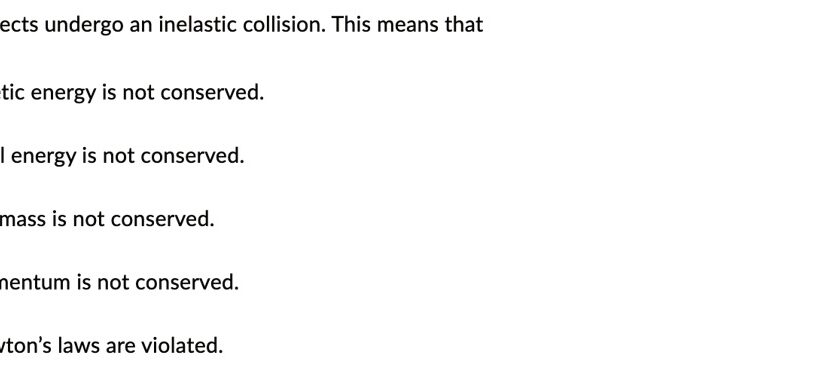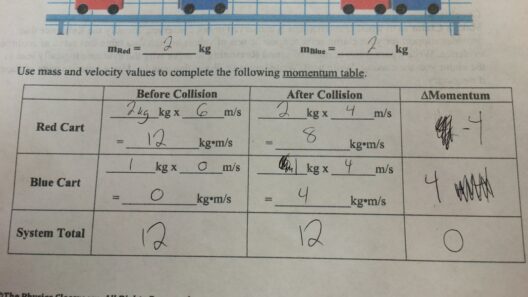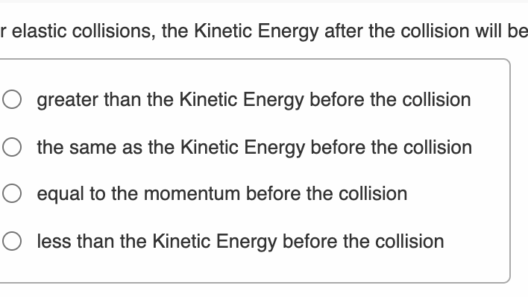In the realm of physics, collisions are a profound demonstration of energy and momentum in action. But, have you ever pondered why energy seems to go missing during inelastic collisions? Let’s embark on a journey through the fascinating world of inelastic collisions and unravel the mysteries surrounding energy conservation. Why is it that in these chaotic exchanges, energy is not conserved? This question invites further exploration, presenting both a playful inquiry and a formidable challenge to our understanding of physics.
Inelastic collisions are a unique category where two colliding objects do not retain their original identities after impact. Unlike elastic collisions, where kinetic energy is conserved, inelastic collisions allow for a fascinating transformation of energy. Understanding this phenomenon requires a deep dive into the principles of energy conversion and the law of conservation of momentum.
The law of conservation of momentum states that in a closed system, the total momentum before the collision is equal to the total momentum after the collision. This principle holds true in both elastic and inelastic collisions. However, while momentum is conserved, the same cannot be said for kinetic energy in inelastic collisions. A tantalizing contradiction arises, prompting the question: If momentum is preserved, why can’t we say the same for energy?
The Distinction Between Elastic and Inelastic Collisions
The distinction between elastic and inelastic collisions is fundamental in comprehending the nuances of energy transfer. In elastic collisions, objects rebound off one another with no permanent deformation or generation of heat. Before and after, the total kinetic energy remains constant. Imagine two billiard balls striking each other: they bounce off, maintaining their kinetic energy in motion.
In contrast, inelastic collisions reveal a different narrative. Engaging in a more chaotic and less orderly exchange, two objects collide and often stick together, moving as a single entity post-collision. This coalescence leads to a significant portion of kinetic energy being transformed into other forms of energy, such as thermal energy or sound energy. Consider a car crash, where vehicles crumple upon impact. The kinetic energy that once propelled the cars forward dissipates, absorbed into the deformation of the metal, producing heat and sound.
Energy Transformation: The Role of Deformation and Heat
The energy lost in inelastic collisions is a vivid reminder of the laws of thermodynamics at work. When two objects collide inelastically, their kinetic energy converts into internal energy due to deformation. This phenomenon can be understood through the lens of mechanical work, where energy is expended to alter the structure of the materials involved in the collision.
The collision transforms kinetic energy into heat, a process that often goes unnoticed. During a collision, the molecular structure of the materials undergoes a change, leading to an increase in temperature. This thermal energy dissipates into the surroundings, illustrating the irrevocable loss of the original kinetic energy. The sound produced during a collision also captures energy that was once kinetic, scattering it into the environment and further solidifying the notion that total kinetic energy cannot be regained.
Inelastic collisions, therefore, serve as an illustrative case study in energy transformation. The transition from kinetic energy to thermal energy and sound exemplifies the pivotal concept of energy dissipation in systems characterized by inelastic interactions.
Real-World Applications and Implications
The understanding of energy non-conservation in inelastic collisions extends far beyond theoretical exploration. Numerous real-world applications demonstrate the significance of this principle in various fields. From engineering to automotive safety and even sports science, the implications are profound.
Automotive engineers, for example, design crumple zones in cars that strategically absorb kinetic energy during collisions, thereby safeguarding passengers. Upon impact, the car’s structure crumples, dissipating energy and reducing the force transferred to its occupants. This intentional design harnesses the principles of inelastic collisions, illustrating that harnessing energy loss can lead to enhanced safety.
Similarly, sports scientists analyze inelastic collisions to better understand athlete performance and equipment design. Whether it’s a gymnast landing after a routine or a football player tackling, understanding how energy dissipates during these actions allows for advancements in techniques and gear that maximize safety and efficiency.
In the context of our increasingly interconnected world, the study of inelastic collisions highlights the energy transformations that underpin various processes, emphasizing the need for a critical approach to engineering and behavior optimization in dynamic systems.
A Challenge to Conventional Understanding
As we grapple with the intricacies of inelastic collisions and the mysterious absence of conserved energy, one challenge stands out: Can we find innovative methods to mitigate energy loss during these interactions? This question opens pathways for technological advancements and sustainable practices that harness energy more efficiently, promoting a paradigm shift in our approach to energy utilization.
In closing, the exploration of why energy is not conserved in inelastic collisions unveils a fascinating intersection of theory and practical application. By examining the principles underlying energy transformation and the real-world ramifications of inelastic collisions, we reap insights that not only deepen our understanding of physics but also inspire innovative approaches to the challenges posed by energy conservation in our daily lives.








